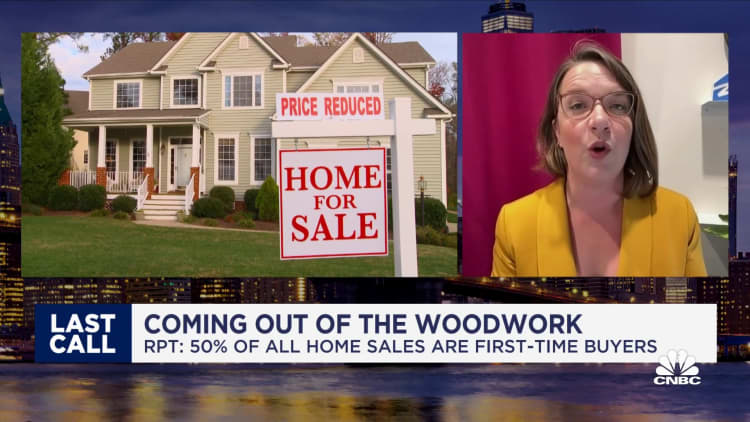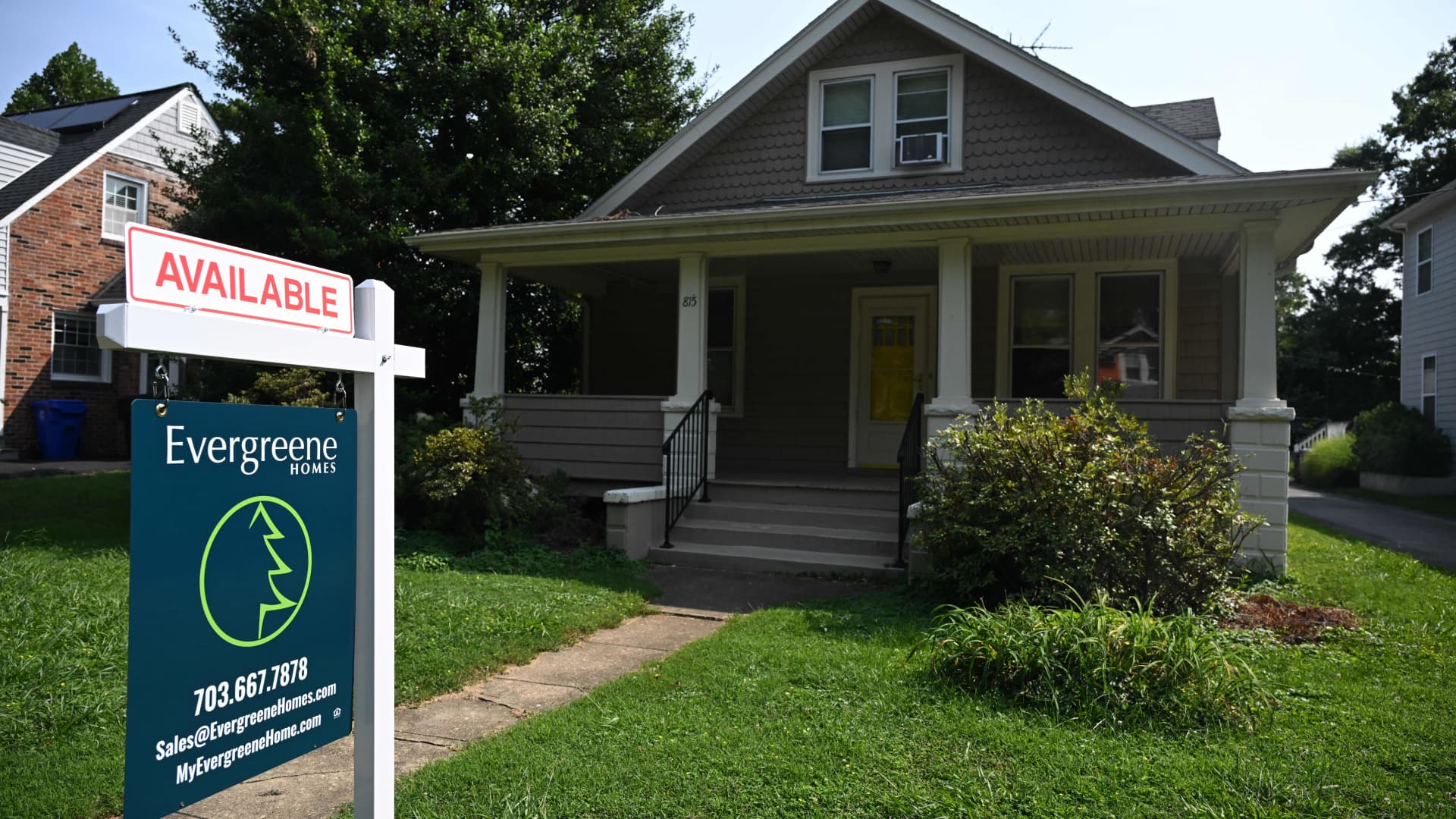A “For Sale” sign in Arlington, Virginia, on Aug. 22, 2023.
Andrew Caballero-Reynolds | AFP | Getty Images
Fewer people can afford to buy a house these days.
On top of soaring home prices, 30-year fixed mortgage rates have been hovering near the highest level in more than two decades.
“U.S. home prices are near record highs, and mortgage rates have rocketed to their loftiest levels since 2000,” said Bankrate analyst Jeff Ostrowski. “For today’s would-be homebuyers, times are decidedly tough. They face limited choices and an affordability squeeze.”
For some buyers, that leaves just one option: asking their parents for help.
Buyers turn to the bank of mom and dad
“First-time buyers cobble together down payment sources from at least two places,” Zillow’s chief economist Skylar Olsen recently said on CNBC’s “Last Call.”
“Some of that is hard-won savings,” she said. “The other part is, say, a gift from family and friends.”
In fact, roughly 40% tap the bank of mom and dad, up from only one-third pre-pandemic, Zillow found. “That’s a pretty privileged network,” Olsen added.
More from Personal Finance:
Homeowners say roughly 5% is the magic number to move
More unmarried couples are buying homes together
Some costly financial surprises for first-time homebuyers
Would-be homebuyers need a salary of $114,627 to afford a median-priced house in the U.S., according to another report by real estate site Redfin, a particularly high bar for those just starting out.
To bridge the gap, a growing share of younger house hunters are now considered “nepo-homebuyers,” because they rely on family money to complete their purchase, the Redfin report said.
Nearly 40% of recent homebuyers under age 30 used either a cash gift from a family member or an inheritance to afford their down payment, Redfin also found.
Home affordability is a growing problem
Despite being the hallmark of the American Dream, close to three-fourths of would-be homeowners said affordability is their greatest obstacle, a recent report by Bankrate found.
In fact, housing is far less affordable today than in any time in recent history, several studies show.

Over the past 35 years, the payment-to-income ratio — a commonly used measure of the share of median income it takes to make the monthly principal and interest payment on the median home with a 30-year mortgage and 20% down — has averaged less than 25%, according to data from ICE Mortgage Technology.
At its peak in 2006 before the crash, the payment-to-income ratio was 34%. In late 2023, the payment-to-income ratio is 40%.
‘A down payment isn’t everything’
Often, it’s the down payment that seems particularly daunting.
However, there are options, noted LendingTree’s senior economist Jacob Channel. “Though they are important, buyers should remember that a down payment isn’t everything, and, even if you don’t have tens of thousands of dollars you can put toward one, that doesn’t mean that you won’t be able to buy a house.”
While a 20% down payment is still considered the standard, the federal government, states, banks and credit unions all offer programs with much lower down payment requirements, or even none at all.
“Keep in mind that many lenders and specific loan options, like FHA mortgages, don’t necessarily require particularly large down payments,” Channel said.
Don’t miss these stories from CNBC PRO:

